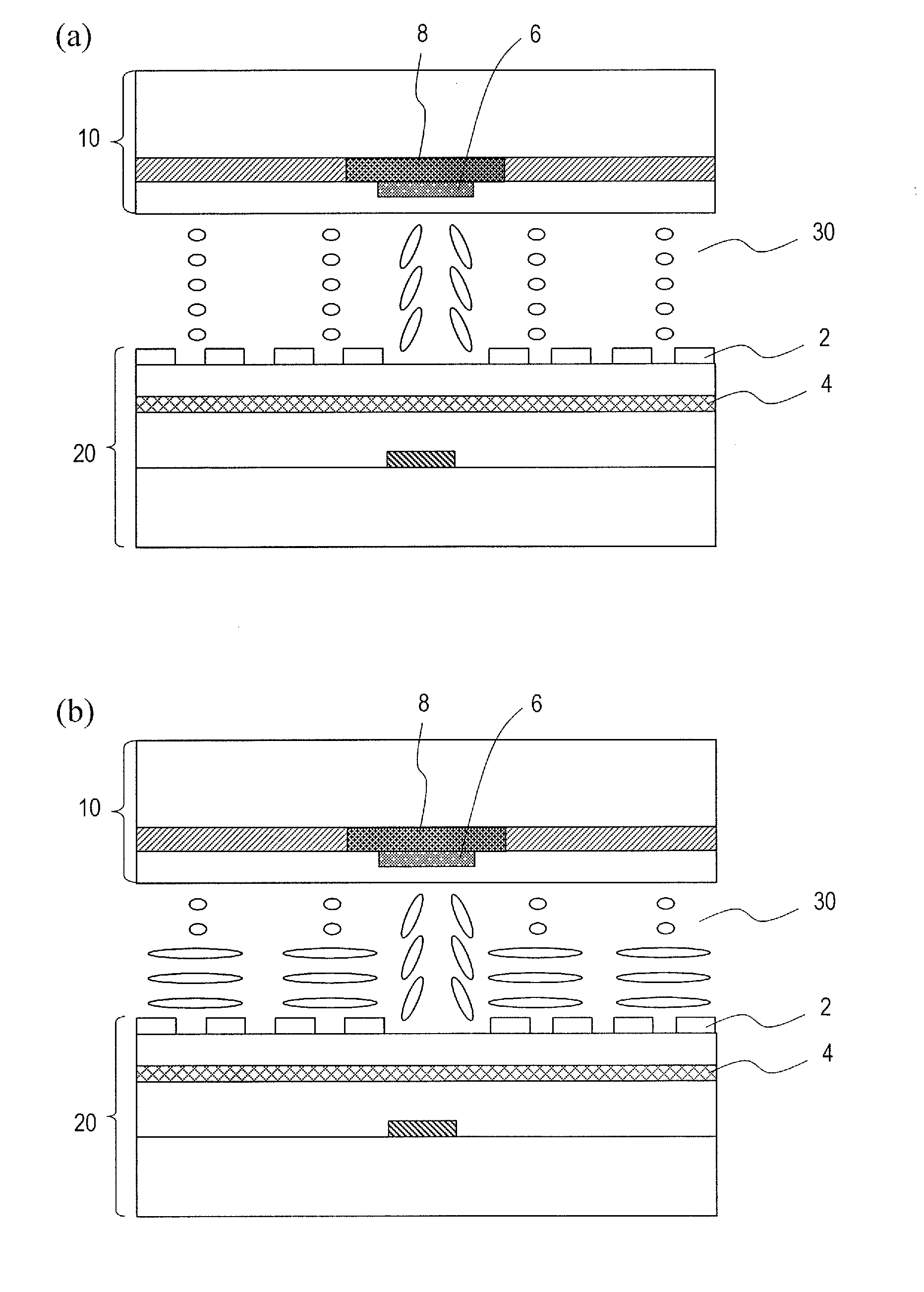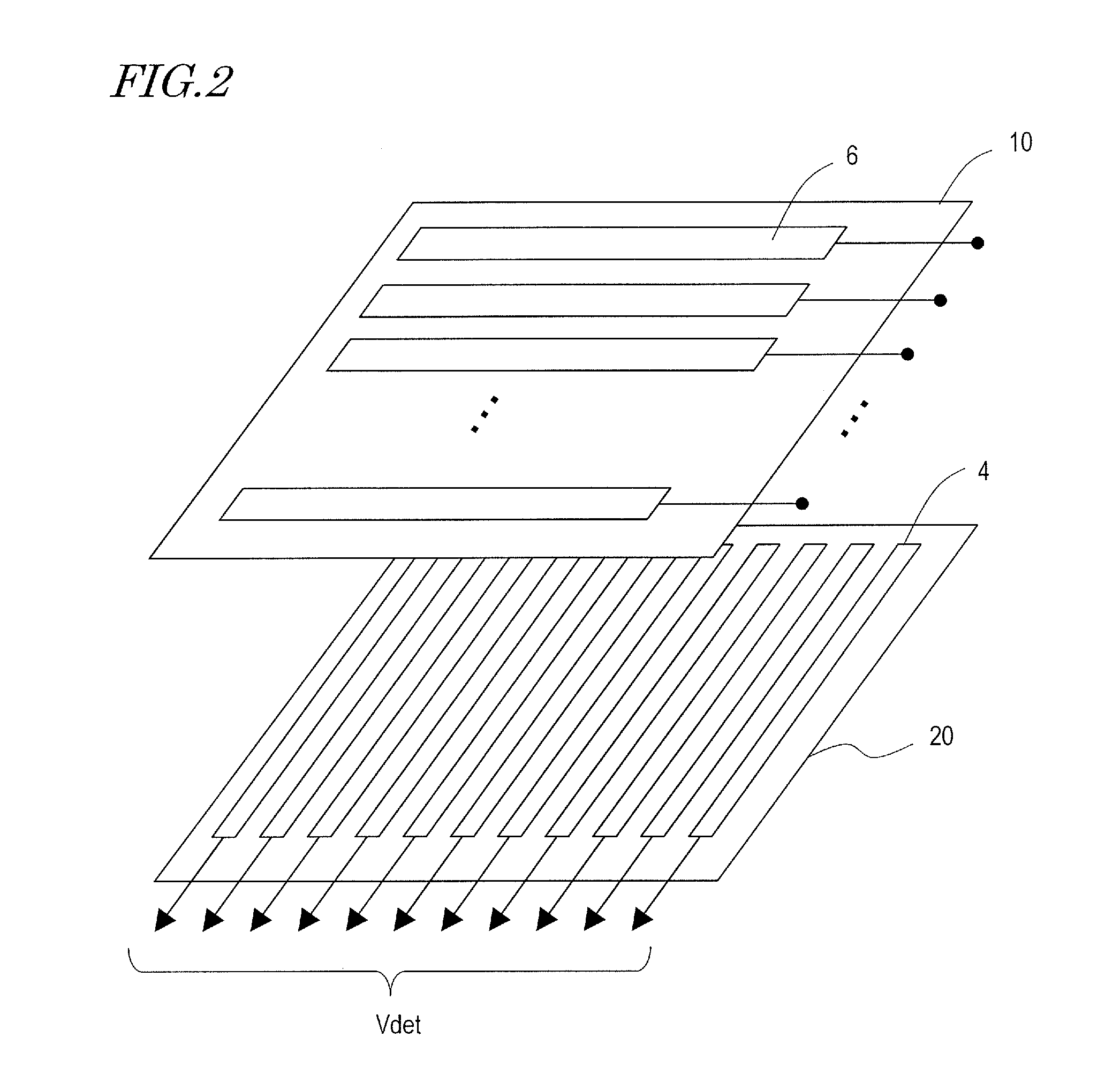Display device with touch sensor
a display device and touch sensor technology, applied in the field of touch sensor display devices, can solve the problems of reducing display quality, difficult connections, increasing thickness of display devices, etc., and achieve the effect of preventing the lowering of display quality and high precision
- Summary
- Abstract
- Description
- Claims
- Application Information
AI Technical Summary
Benefits of technology
Problems solved by technology
Method used
Image
Examples
embodiment 1
[0068]FIG. 1 is a diagram showing a display device 100 with a touch sensor according to an embodiment of the present invention. The display device 100 with a touch sensor includes a TFT substrate (pixel substrate) 20, a counter substrate 10 provided on the observer side of the TFT substrate 20, and a liquid crystal layer 30 provided between the TFT substrate 20 and the counter substrate 10.
[0069]The TFT substrate 20 includes a glass substrate 21, and a pixel electrode 2 and a common electrode 4 for applying a voltage across the liquid crystal layer 30. An insulating layer 25 is provided between the glass substrate 21 and the common electrode 4, and an insulating layer 23 is provided between the common electrode 4 and the pixel electrode 2. The common electrode 4 is used also as a detection electrode of the touch sensor.
[0070]The counter substrate 10 includes a glass substrate 11, a color filter layer 13 and a resin layer 15. A driving electrode 6 (FIG. 3) of the touch sensor is prov...
embodiment 2
[0105]Next, a display device 100 with a touch sensor according to Embodiment 2 of the present invention will be described. FIG. 17 is a diagram showing the TFT substrate 20 of the display device 100 with a touch sensor of the present embodiment, FIG. 18(a) is a cross-sectional view taken along line AA′ shown in FIG. 17, and FIG. 18(b) is a cross-sectional view taken along line BB′ shown in FIG. 17.
[0106]In this example, the common electrode 4 is provided closer to the liquid crystal layer 30 than the pixel electrode 2. Since the pixel electrode 2 is absent between the driving electrode 6 of the touch sensor and the detection electrode (common electrode) 4, the touch-detecting operation is not influenced by variations, among different liquid crystal displays, in the capacitance between the pixel electrode 2 and the common electrode 4. Thus, it is possible to increase the precision of the touch-detecting operation by the output voltage Vout shown in FIG. 11(b).
embodiment 3
[0107]Next, a display device 100 with a touch sensor according to Embodiment 3 of the present invention will be described. FIG. 19 is a diagram showing the TFT substrate 20 of the display device 100 with a touch sensor of the present embodiment, FIG. 20(a) is a cross-sectional view taken along line AA′ shown in FIG. 19, and FIG. 20(b) is a cross-sectional view taken along line BB′ shown in FIG. 19.
[0108]In this example, the driving electrode 6 is provided on the liquid crystal layer side of the resin layer 15, which is provided on the color filter layer 13. A portion 4C of the pattern of the detection electrode (common electrode) 4, opposing the driving electrode 6, is removed. That is, an area of the detection electrode on the TFT substrate side that overlaps the driving electrode, as seen in a plan view, is removed by patterning, thereby making it possible to reduce the capacity load with the driving electrode 6. After the surface is planarized by providing the resin layer 15 on t...
PUM
| Property | Measurement | Unit |
|---|---|---|
| sheet resistance | aaaaa | aaaaa |
| size | aaaaa | aaaaa |
| width | aaaaa | aaaaa |
Abstract
Description
Claims
Application Information
 Login to View More
Login to View More - R&D
- Intellectual Property
- Life Sciences
- Materials
- Tech Scout
- Unparalleled Data Quality
- Higher Quality Content
- 60% Fewer Hallucinations
Browse by: Latest US Patents, China's latest patents, Technical Efficacy Thesaurus, Application Domain, Technology Topic, Popular Technical Reports.
© 2025 PatSnap. All rights reserved.Legal|Privacy policy|Modern Slavery Act Transparency Statement|Sitemap|About US| Contact US: help@patsnap.com



